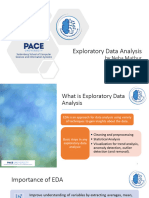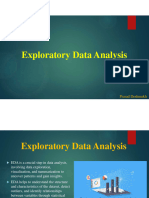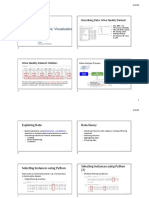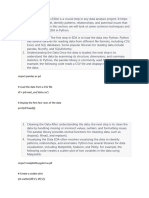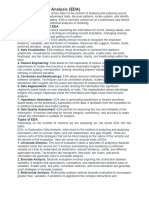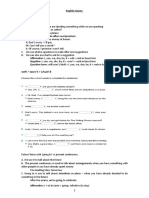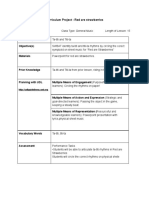0% found this document useful (0 votes)
19 views4 pagesExploratory Data Analysis
The document provides a comprehensive guide on performing Exploratory Data Analysis (EDA) using Python, detailing steps such as loading libraries, checking basic dataset information, visualizing data distributions, and handling missing data and outliers. It emphasizes the use of libraries like pandas, matplotlib, and seaborn for data manipulation and visualization. The final goal of EDA is to gain insights into the dataset's structure, relationships, and potential issues to inform further analysis or modeling.
Uploaded by
Mohammad HasimCopyright
© © All Rights Reserved
We take content rights seriously. If you suspect this is your content, claim it here.
Available Formats
Download as DOCX, PDF, TXT or read online on Scribd
0% found this document useful (0 votes)
19 views4 pagesExploratory Data Analysis
The document provides a comprehensive guide on performing Exploratory Data Analysis (EDA) using Python, detailing steps such as loading libraries, checking basic dataset information, visualizing data distributions, and handling missing data and outliers. It emphasizes the use of libraries like pandas, matplotlib, and seaborn for data manipulation and visualization. The final goal of EDA is to gain insights into the dataset's structure, relationships, and potential issues to inform further analysis or modeling.
Uploaded by
Mohammad HasimCopyright
© © All Rights Reserved
We take content rights seriously. If you suspect this is your content, claim it here.
Available Formats
Download as DOCX, PDF, TXT or read online on Scribd
/ 4








